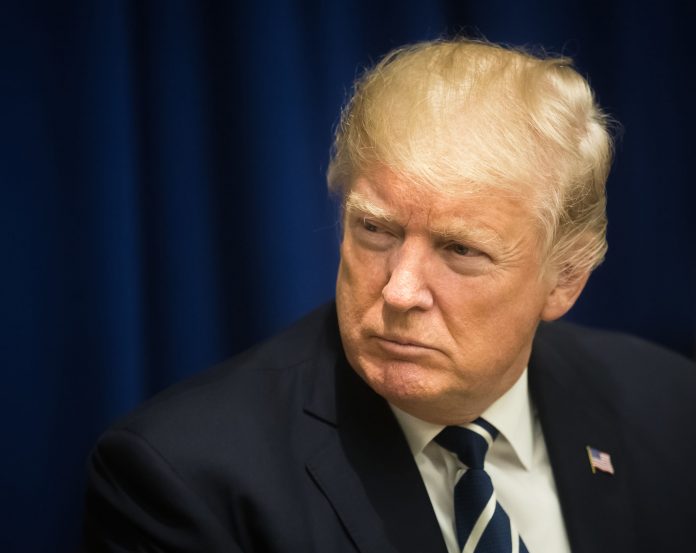
President Trump has tried seemingly everything to lower prescription drug prices.
In 2018 alone, he established an international pricing index to prevent overcharging from foreign drug producers, targeted drug rebates between producers and middlemen, and granted Medicare Part D plans more authority to negotiate drug prices. Despite these and other efforts, the prices for thousands of drugs continue to increase.
That same year, President Trump worked with Secretary of Health and Human Services Alex Azar to develop a policy requiring drug producers to disclose in TV ads the price of any drug costing more than $35 for a month’s supply. Secretary Azar hailed the plan as “the single most significant step any administration has taken toward a simple commitment: American patients deserve to know the prices of the healthcare they receive.”
Before the rule was set to take effect in June 2018, four drug producers took legal action against the Azar’s department. The companies charged that the requirement violated their First Amendment rights and that the agency lacked the statutory authority to compel price disclosures. U.S. District Judge Amit Mehta, who presided over the case, sided with the drug producers, stating, “no matter how vexing the problem of spiraling drug costs may be, HHS cannot do more than what Congress has authorized.”
Six weeks after the court struck down the agency’s rule, President Trump appealed the decision to a higher federal court. Most recently, after months of legal deliberation, the court has again denied the HHS and the Trump Administration the authority to require drug producers to disclose their prices in TV ads. In a scathing rebuke, presiding judge Patricia Millett stated, “Because there is no reasoned statutory basis for its far-flung reach and misaligned obligations, the disclosure rule is invalid and is hereby set aside.”
Although dealt with a “major legal setback,” President Trump continues to pursue legislative action requiring drug companies to disclose their prices.
He has options. There is currently another bill mandating that drug companies disclose their prices in any consumer advertising. Using the usual law-creating process would avoid judicial hang-ups during an election year. There is also already general support by both parties for healthcare price transparency laws.
President Trump could also issue an executive order mandating price transparency from drug producers. He recently exercised similar authority when issuing an order for hospitals to disclose prices for common operating procedures.
But why is the Trump administration determined to “make healthcare prices more transparent than ever before”? As outlined on the White House’s website, the president hopes that requiring drug providers to disclose their prices will generate price competition for patient patronage.
However, mandating producers to engage in price transparency to elicit price competition is putting the cart before the horse.
Many drug producers began providing their drug prices online for cost-conscious consumers long before any proposed legislation would require them to do so. There are also dozens of websites that allow patients to compare the costs of prescription drugs. Drug pricing indicator guides for U.S. drug prices date back to the 1990s. However, already existing information on drug prices seems to have done little to create competition.
Economic principles teach us that high prices for goods signal that a product is likely profitable. This motivates more production and competition for consumers’ attention. This competitive process can result in better price transparency and a host of other benefits for consumers. However, when regulation limits a supplier’s ability to serve patients, competition is stifled, prices remain high, and consumers are worse off.
The U.S. healthcare system is one of the most regulated sectors of its economy. As of 2014, The RegData database published by the Mercatus Center and George Mason University finds that the pharmaceutical and medicine manufacturing sector in the United States has over 10,000 more regulations than the median U.S. industry. These barriers make producing drugs more expensive, often leaving patients to foot the bill.
Fortunately, even small competitors in highly regulated markets can lead to lower prices. Consider the case of EpiPen.
In 2015, the price of EpiPens increased to over $300 a pen. Patient frustration over high prices, coupled with the need for an essential medication, prompted pharmacies to begin ordering Adrenaclick. Although not as commonly used as EpiPen, Adrenaclick provided similar medicinal properties and cost only $10.
Predictably, Adrenaclick’s market share increased from 1 percent to 7 percent. By February 2017, Adrenaclick and other EpiPen substitutes composed nearly 30 percent of the prescription epinephrine auto-injector market. Facing steep competition, the EpiPen price dropped.
Price transparency alone cannot substitute for the competitive process, which provides consumers with cheaper and often higher quality goods. Politicians and policymakers who fail to grasp this point will neglect the real reforms that can make healthcare more affordable. Let this lesson be another attempt to make the underlying problem more transparent.